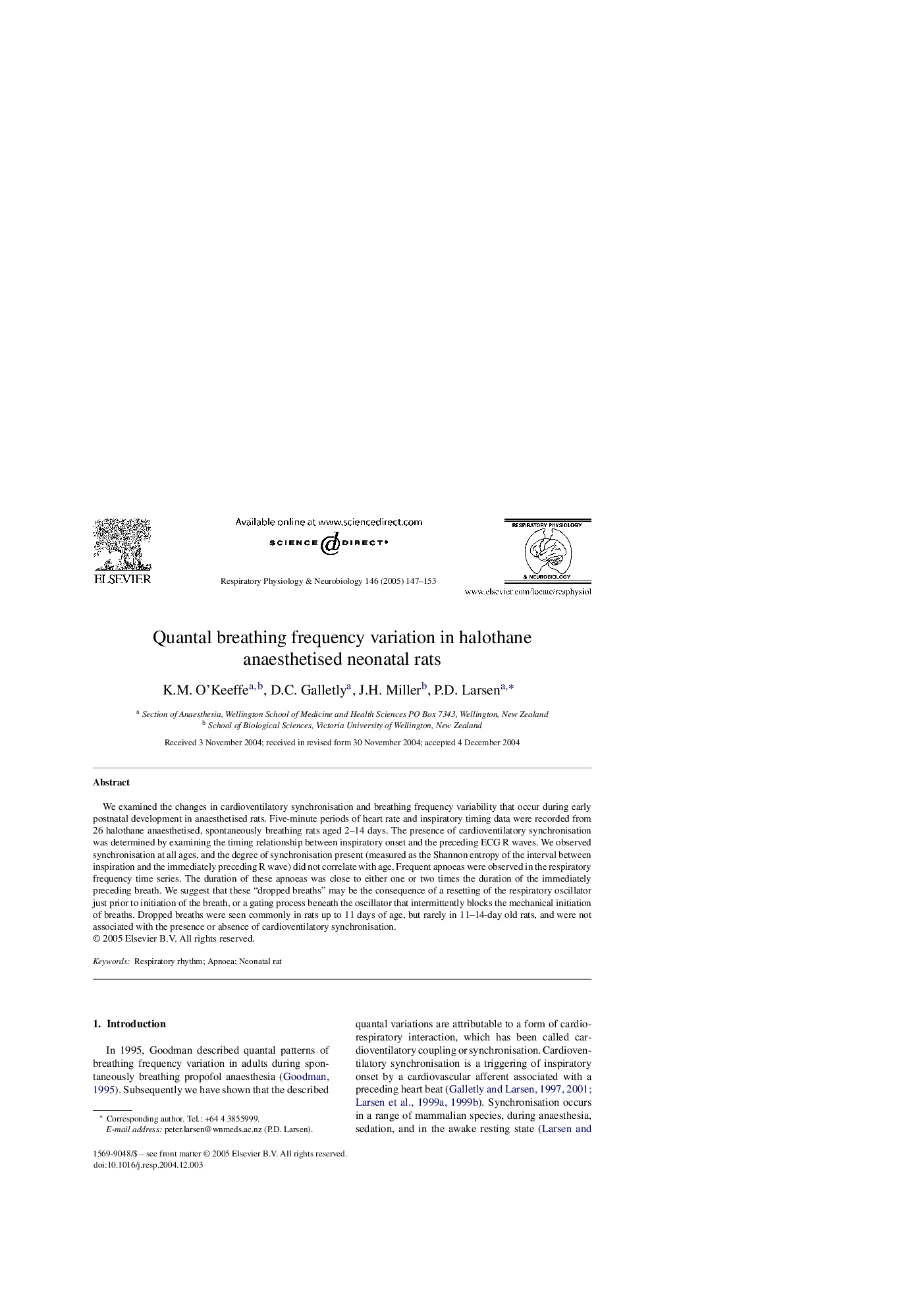| Article ID | Journal | Published Year | Pages | File Type |
|---|---|---|---|---|
| 9152320 | Respiratory Physiology & Neurobiology | 2005 | 7 Pages |
Abstract
We examined the changes in cardioventilatory synchronisation and breathing frequency variability that occur during early postnatal development in anaesthetised rats. Five-minute periods of heart rate and inspiratory timing data were recorded from 26 halothane anaesthetised, spontaneously breathing rats aged 2-14 days. The presence of cardioventilatory synchronisation was determined by examining the timing relationship between inspiratory onset and the preceding ECG R waves. We observed synchronisation at all ages, and the degree of synchronisation present (measured as the Shannon entropy of the interval between inspiration and the immediately preceding R wave) did not correlate with age. Frequent apnoeas were observed in the respiratory frequency time series. The duration of these apnoeas was close to either one or two times the duration of the immediately preceding breath. We suggest that these “dropped breaths” may be the consequence of a resetting of the respiratory oscillator just prior to initiation of the breath, or a gating process beneath the oscillator that intermittently blocks the mechanical initiation of breaths. Dropped breaths were seen commonly in rats up to 11 days of age, but rarely in 11-14-day old rats, and were not associated with the presence or absence of cardioventilatory synchronisation.
Keywords
Related Topics
Life Sciences
Biochemistry, Genetics and Molecular Biology
Physiology
Authors
K.M. O'Keeffe, D.C. Galletly, J.H. Miller, P.D. Larsen,
